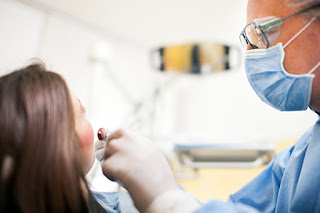When you have impacted wisdom teeth, we need to perform an oral surgery to remove them. This process is typically done at the dentist office, so you are in a known and comfortable environment. Naturally, there is always the chance your dentist will decide that you need to be moved to a hospital for the oral surgery. Typically, this only happens when there is more than one tooth to be removed, the process could be longer and more complicated than a simple extraction, or if there is a concern about the patient's overall health. One thing to note: if your oral surgeon or dentist finds an active infection in your mouth, they will put off the oral surgery till a different day. This is because we never want to operate in the mouth when there is an active infection and so will prescribe a course of antibiotics to remove the infection before you go in for your oral surgery.
Most oral surgery, including wisdom tooth extractions, are performed under general anesthesia. Local anesthesia can also be used, which numbs the gums and tissue around the tooth. General anesthesia will put you to sleep, meaning you will be unaware of the process, feel absolutely no discomfort, and awake in a slightly groggy state. Because this procedure and any oral surgery done under general anesthesia requires the need to put you to sleep, we will require you to not eat anything for at least 12 hours before the procedure takes place.
For a wisdom tooth extraction, we start the oral surgery by cutting the gum open to reveal the tooth. If there is any connective tissue that is connecting the tooth to the bone, we will remove this first so the tooth is not holding the bone. If there is any bone covering the tooth, or teeth, we will remove that as well, so the extraction path is clear. Finally, we will remove the tooth, cutting it into smaller pieces if necessary for a smooth extraction. After the oral surgery is completed, we will close up the extraction site with self-dissolving stitches. These will eventually dissolve completely.
After any surgery, including oral surgery, you will need to take it easy for a few days. Pain medications can be used in the event you have any discomfort.

